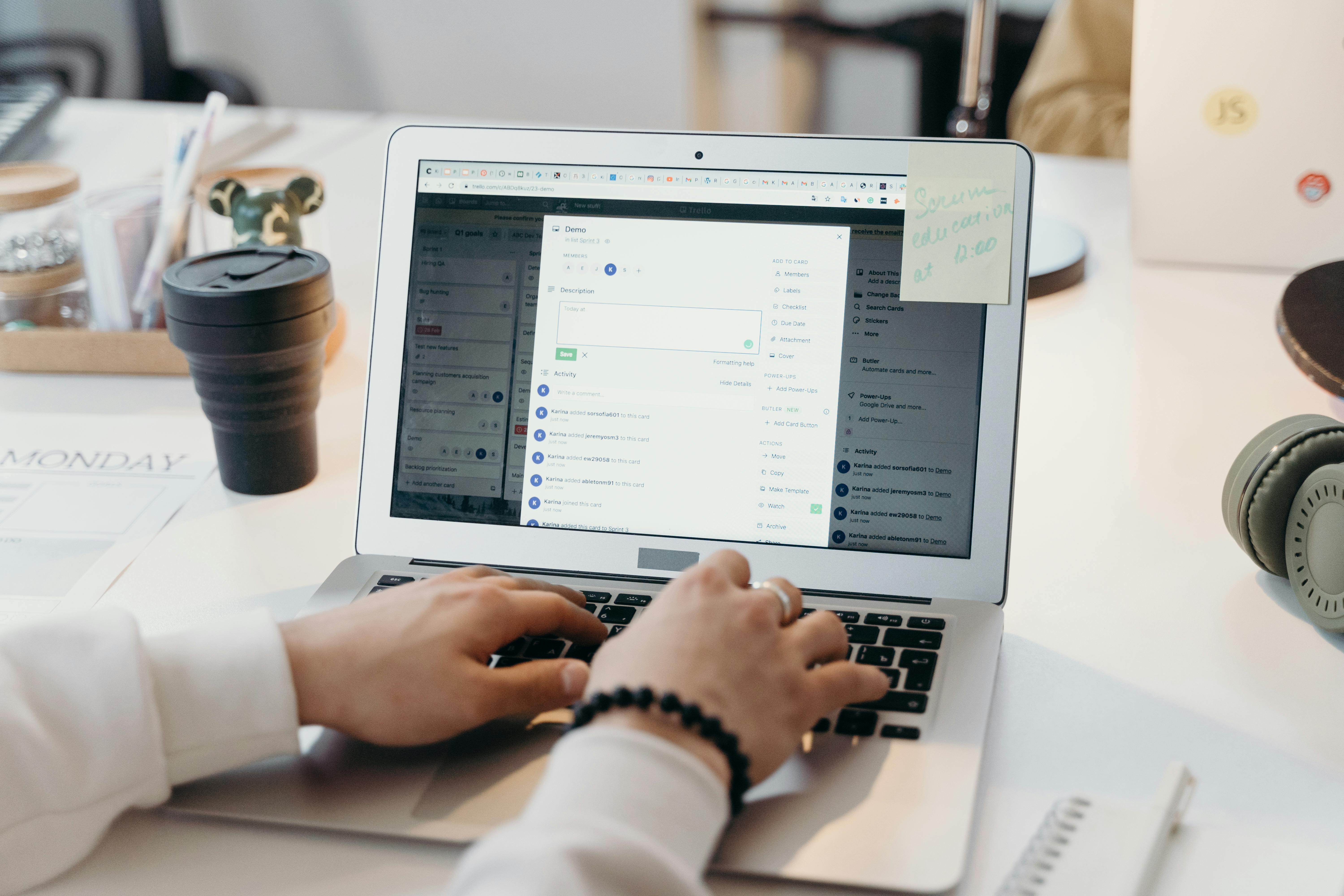Cold Email
Discover the Best Outreach Tools for SEO Strategy
Discover the power of outreach tools for effective business communication. Learn to balance automation with personalization, target with precision, and enhance engagement with key strategies for email and LinkedIn outreach.
Jan 31, 2024

Ever wondered how businesses manage to connect with influencers, build relationships with journalists, or get their content featured on top sites? That's where outreach tools come into play. They're the secret sauce for networking and marketing pros, and they're all about making those crucial connections that can skyrocket your brand's visibility.
Think of outreach tools as your digital megaphone, amplifying your message to the right people at the right time. But why are they essential for your strategy, and how can they transform your outreach efforts? Stick around, and you'll discover how these tools can be game-changers for your business.
What Are Outreach Tools

Imagine you're a baker trying to let the world know about your mouthwatering pastries. Instead of knocking on every door in town, you'd probably want a megaphone to amplify your message to as many potential customers as possible. That's where outreach tools step in, but for your business communications. These tools are the high-powered megaphones in the digital world that help you connect with influencers, bloggers, journalists, and potential clients through cold emailing or LinkedIn outreach.
Key to growing your brand, outreach tools provide you with an arsenal of features designed to target the right people, personalize messages, and track your campaign's performance. They're like savvy assistants, helping to ensure that your message isn't just a shout into the void but a clear, targeted conversation directed at someone who is genuinely interested in what you have to offer.
Avoid Common Pitfalls
As user-friendly as these tools can be, there are some common mistakes many fall into. The number one blunder? Impersonal, generic messages. Just as you can spot a mass-produced flyer from a mile away, so can the influencers and journalists you're trying to reach. To dodge this, personalize your outreach. Think of these communications as a first handshake; you wouldn't greet someone with a Dear Occupant, would you?
Adapt Your Strategy
When it comes to the techniques and methods associated with using outreach tools, there's no one-size-fits-all approach. Tailoring your strategy to the platform and recipient is crucial. For instance, a LinkedIn message might need a more professional tone, while an email to a blogger might be casual yet captivating. Timing is also key. Sending an email too early in the morning or too late at night could mean it's lost in the abyss of the recipient's inbox.
Leveraging these various techniques effectively calls for an understanding of your audience and objectives. Where is your audience active? What is the nature of your message? Is it a cold email looking to generate leads or a LinkedIn message meant for networking?
Benefits of Outreach Tools
When you're aiming to snag more leads, whether through cold emails or LinkedIn outreach, you might think it's a numbers game. But here's the scoop: it’s not just about sending out a barrage of messages. You’ve got to be smart and strategic with your approach. That's exactly where outreach tools come in.
Think of outreach tools as your personal assistant that never sleeps. They keep your pipeline filled with potential contacts, help you send messages at just the right time, and assist you in crafting emails that feel like they're hand-written just for the receiver. This level of personalization can skyrocket your response rates.
Here are a few key benefits of using outreach tools:
Efficiency: Like a well-oiled machine, outreach tools automate the grunt work. You won't be manually tracking who opened your emails or who ignored them. These tools do the heavy lifting for you, freeing up your precious time to focus on crafting your next big pitch.
Analytics: Knowledge is power. By tracking open rates, click-through rates, and response rates, you get a bird’s-eye view of what's working and what's not. This means you can continually tweak your strategy for better results.
Avoid common pitfalls such as:
Overlooking Personalization: Never blast the same message to everyone. Outreach tools often have features that let you customize messages so each recipient feels like you're speaking directly to them.
Ignoring Timing: Be observant about when you send out messages. Your ideal contact might be more receptive during specific hours. Luckily, many outreach tools have scheduling features to hit that sweet timing spot.
In terms of techniques, you've got options. A/B testing different subject lines or email templates can be golden. Think of it like fishing; you're testing different baits to see what gets you the biggest catch.
Lastly, your approach should be as unique as your brand. Consider these best routes when incorporating outreach tools into your strategies:
Identify your audience and segment them: You're not going to talk to a CEO the same way you'd chat with a mid-level manager, right?
Personalize your message: Use the recipient's name, reference their work, or mention a common professional interest.
Follow-up is crucial: If at first you don't succeed, these tools can help you follow up without feeling like a robot.
How Outreach Tools Can Transform Your Strategy
Imagine you're a chef in a bustling kitchen—your outreach tools are like the shiny, high-tech gadgets that can take your dishes from good to gourmet. These tools assist you in managing your recipes—aka your outreach campaigns—ensuring you serve up timely, personalized messages that delight your audience's palate.
Automated emails and social media messages are like the sous-chefs of your kitchen. They'll handle the grunt work of sending messages, while you sprinkle in the magic of personalization. A/B testing is your taste test; it lets you try different flavors of your messaging to see what makes your audience come back for seconds.
Beware of common blunders like over-automation, leading to impersonal messages. You wouldn't want to eat at a restaurant that feels too robotic, right? The same goes for your outreach. To avoid this, ensure every automated message still has a hint of human touch.
When you're juggling multiple pans, it's easy to drop one. Segmentation is like organizing your ingredients by type—keeping dairy with dairy and veggies with veggies. It helps you craft messages that resonate with each distinct audience group. For instance, your LinkedIn professionals might prefer a more polished, stats-driven approach, while your informal email list might appreciate a friendlier, more conversational tone.
Utilize follow-up sequences smartly. Just like how a chef checks on their guests after serving the meal, you should follow up with your contacts. It's not just about asking if they enjoyed the dish, it's about offering dessert—the next step in your relationship.
Incorporating your outreach tools effectively means choosing the right utensil for the right job. Ask yourself—when is the best time to send that LinkedIn message or email? Timing is key. It's like catching your diners when they're just the right amount of hungry—interested but not overwhelmed.
Finally, always be proactive in adjusting your strategy with real-time feedback. Just like a chef refining their recipes based on customer feedback, tweak your campaign based on data and responses. With these tools and tips, you're all set to cook up a storm and win over your audience, plate by plate.
Key Features of Outreach Tools

Imagine you're trying to talk to dozens of friends at once. It'd be pretty overwhelming, right? That's where outreach tools come in handy, serving as your trusty megaphone to amplify your voice and ensure each friend hears you — except, in this case, you're reaching out to potential clients or customers.
First up, automation is your best bud. It allows you to send those personalized emails or LinkedIn messages on autopilot. But don't just set it and forget it – you've got to sprinkle in a bit of your magic to keep the ‘personal’ in personalized.
Let's address a common slip-up: too much automation. You've seen those messages that feel about as warm as a robot's handshake, right? To avoid being that person, always remember to add a personal touch to your messages. Reference specific details that relate to the recipient, so they feel you're talking to them, not at them.
Next on your feature checklist is segmentation. Think of it like sorting your laundry – you don't mix your bright red socks with your white shirts unless you want everything to turn pink. Similarly, segment your audience to send relevant content, avoiding the one-size-fits-all pitfall.
Personalized message templates
Automated scheduling
Detailed analytics tracking
CRM integration
Follow-up sequence automation
On to techniques. If you're cold emailing, try the PAS formula – Problem, Agitate, Solve. Hit on a pain point, stir up a bit of discomfort, then swoop in with your solution. For LinkedIn, the law of reciprocity is golden. Offer something of value first before asking for anything.
When incorporating outreach tools into your strategy, start with defining your goals. Are you aiming to generate leads, build relationships, or both? Your goal determines your approach and the features you'll lean on the most.
Adapt and refine as you go; what works great today might need tweaking tomorrow. Monitor response rates, open rates, and, essentially, any rate your tool can track. Use this data to steer your ship, always sailing towards warmer and more responsive shores. Keep your messages in line with your brand's voice, and above all, remain genuinely helpful.
Conclusion
Harnessing the power of outreach tools can significantly elevate your business communication game. Remember, while automation is your ally in scaling efforts and personalizing messages, it's crucial to strike a balance to ensure your outreach doesn't lose its human touch. By segmenting your audience and tailoring your approach, you'll connect more effectively, making every interaction count. Apply proven techniques like the PAS formula and leverage the law of reciprocity to see your engagement rates soar. Always be ready to tweak your strategy based on the feedback you receive. With these tools at your disposal, you're well-equipped to build meaningful relationships and drive your business objectives forward.
Frequently Asked Questions
What are the main features of outreach tools in business communications?
Outreach tools in business communications typically offer automation for sending messages, personalization options, and audience segmentation capabilities to ensure that the right message reaches the right recipient.
How can businesses balance automation and personalization in their communication?
Businesses can maintain a balance by using automation for efficiency and incorporating personal touches in their messages to foster genuine connections with their audience.
Why is segmentation important in communication strategies?
Segmentation allows businesses to tailor their communications to specific groups within their audience, delivering more relevant and effective messages than a generic, one-size-fits-all approach.
What is the PAS formula for cold emailing?
The PAS formula stands for Problem, Agitation, and Solution, and it's a technique that frames a message by identifying a problem, agitating it to highlight the need for a solution, and then offering the solution to the problem.
What does the law of reciprocity imply for LinkedIn outreach?
The law of reciprocity suggests that providing value first in LinkedIn outreach can lead to more positive responses, as recipients are often inclined to reciprocate the helpfulness or value they've received.
How should businesses define their goals for using outreach tools?
Businesses should set clear, measurable objectives for their outreach strategies, such as improving customer engagement, increasing sales leads, or growing their professional network.
Why is real-time feedback critical in outreach communication?
Real-time feedback allows businesses to promptly adjust their communication strategies for better engagement and results, ensuring that their outreach efforts are effective and responsive to their audience's needs.

